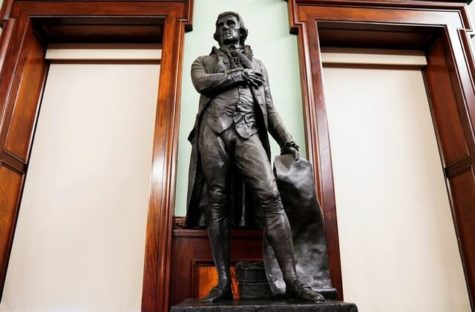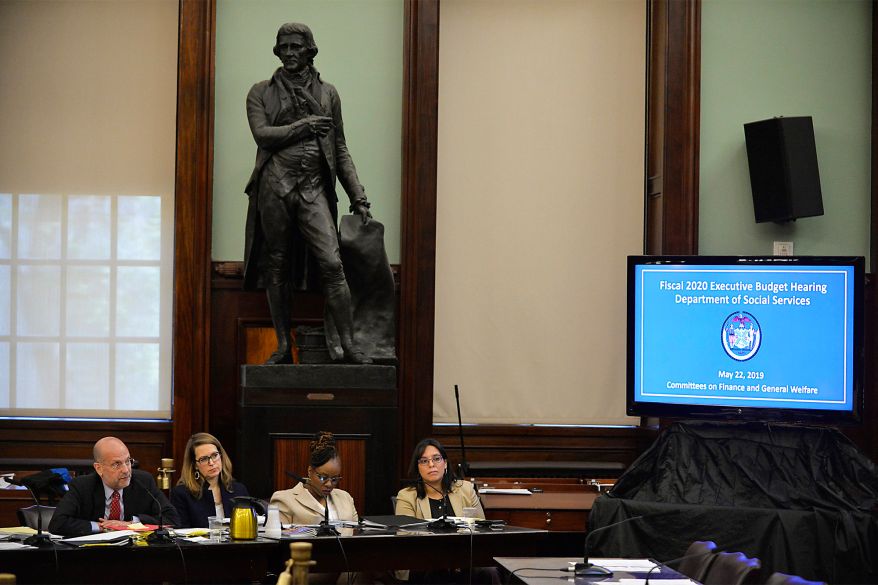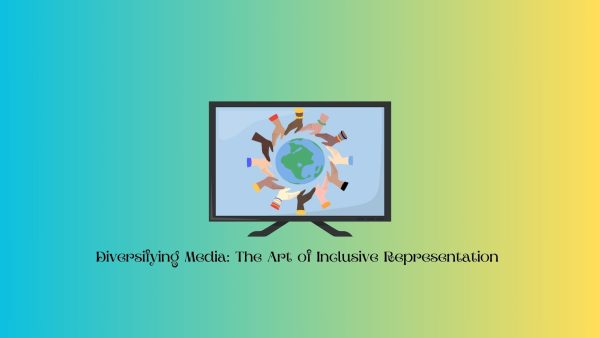Should We Be Removing the Statues of Historical Figures With Controversial Pasts?
November 7, 2021
On October 19, 2021, the New York City Council of Chambers made a modern and bold decision to remove a 7-foot statue of the 3rd president of the United States of America from the Chambers hall. In this infamous depiction, a bronze statue of Thomas Jefferson gallantly gazes straight ahead in an upright position, holding a feathered pen with the Declaration in his hands. The statue was erected in 1833 and moved to the New York City Council of Chambers in 1915, where it remained in its esteemed location until two weeks ago.
According to The New York Times, the statue initially served as “a testament to [Jefferson’s] role as one of the nation’s founding fathers and the primary author of the Declaration of Independence” (nytimes.com). Thomas Jefferson is regarded by many as one of the most influential American founding fathers. The primary author of the Declaration of Independence and the inaugural Secretary Of State, Thomas Jefferson, and his countless political feats, have helped form the foundations of our very nation.
Jefferson had one major fault, however. He was a prominent slave owner and is assumed to have fathered several children with his slaves. Several council members took personal offense to the presence of a statue of Jefferson, considering that aspect of his past. Adrienne Adams, the New York councilwoman and co-chair of the Black, Latino, and Asian Caucus, passionately opposed having a statue of the President in such a notable location. In an emotional speech preceding the vote to remove the statue, Adams fervidly remarked that “it makes [her] deeply uncomfortable knowing that [the council members] sit in the presence of a statue that pays homage to a slaveholder who fundamentally believed that people who look like [her] were inherently inferior, lacked intelligence, and were not worthy of freedom or rights” (cnn.com).
According to Councilwoman Inez Barron, the removal of this statue was the “product of 20 years of effort by members of the Council” (cnn.com). Efforts to remove the statue date back to 2001, when Assemblyman Charles Barron petitioned for its removal. Action regarding this statue was debated for decades until a vote took place on October 19, 2021. All 51 members of the New York City Council voted unanimously to remove the statue.
In order to fully understand the controversy surrounding the removal of this statue, one must consider the purpose of a dedicated statue. In a 2019 History Today Article, Simon Jon stated that the primary purpose of a statue is to, “[embody] some essential and imperishable historical certainty” (historytoday.com). A statue is meant to serve as a reminder for the general public, typically a positive one, of a person, thing, or legacy with some unforgettably important history.
Some of the most well-known statues depict influential historical figures. A statue of Jesus Christ in Rio De Janeiro remains one of the most visited statues in the world. A statue of David, of the David and Goliath parable, attracts tourists from around the globe in Firenze, Italy. In the very heart of this debate, New York City, the Statue of Liberty depicts Lady Liberty passionately carrying the blazing torch of American freedom.
According to American historian, Julian Hayter, “the tearing down of statues is a way of correctly rewriting American history” (buisnessinsider.com). While it is important to remain politically correct and respectful to every aspect of history, it is also crucial to draw the line between bettering a public environment and removing indubitable elements of history. Revisionist history has proved consequential case after case, yet this American movement seems to forget some of the chief principles of American idealism.
It is also vital to acknowledge the societal standards of the time. Few deny that slavery is an abhorrent and deplorable practice. American slavery is one of the most shameful and dishonorable aspects of American history; however, in Jefferson’s era, slave-owning was nothing short of common. Is it justifiable? Not in the slightest. Is it excusable? Not in any regard. Is it defensible? Nobody is arguing that is.

Statues of some of the most well-known names in history, from presidents such as George Washington, Andrew Jackson, and Ulysses S. Grant, to significant historical figures such as Christopher Columbus, Francis Scott Key, and John Sutter have been removed all around the United States of America. Protesters and public officials of several viewpoints and beliefs have had statues of these men quickly and forcibly removed for a number of reasons, most commonly being past attitudes about slavery or the treatment of Native Americans. Certain practices were and are inexcusable; however, it is still important to remember all of the beneficial decisions, indisputable courage, unparalleled leadership, and historic achievements that these men displayed in their lifetimes.
George Washington led America through its unprecedented infant years with bravery, humility, dedication, and traditions that have governed the United States for the past 231 years. He was the president of precedents whose leadership skills and enduring courage helped secure American independence. But for George Washington, American freedom would have perished at the Battle of Yorktown, and there would not even be a United States of America to host this debate.
Francis Scott Keys wrote the “Star-Spangled Banner,” a poem that became the national anthem because of its unifying and unbreakable ties of nationalism. Since the year 1929, the “Star-Spangled Banner” has danced on the lips of Americans alike. America’s national anthem is a part of everyday life for most, and its author, who helped sew the fabric of America, should receive well-deserved posthumous recognition.
This attempt to permanently erase historical figures can cause insurmountable societal damage. If American history is forgotten or erased, there is nothing to prevent civil atrocities from occurring again. In the spirit of creating a better future, it is imperative that we reflect and remember the factual, unaltered past – both positive and negative elements – in order to progress, grow, and create a better world. Megan Chou (11) is of the firm belief that there can be consequences for this historical revisionism, as she noted that “studying history is an important part of growing.” She went on to elaborate that it is “crucial that we learn the true and honest history, not one that is made-up or modified.”
Renowned Spanish Philosopher George Santayana is most well known for his unforgettable famous quote, “Those who do not remember the past are condemned to repeat it.” One of the many advantages of studying history is to learn the meaningful lessons of the past, whether it be repeating righteous actions or learning from definite errors. Rewriting the past does not change the past, it darkens it. Those who choose to live in ignorance and avoid historical figures with personal shortcomings are destined to face the same future.
From political leaders to celebrities, athletes, and citizens, we all have made mistakes big and small. If we “cancel” Jefferson by removing his statue(s), where do we, as a society, draw the line? Should we delete all songs sung by Michael Jackson because of his documented acts of physical abuse? Should we stop watching Mel Gibson movies because of his antisemitic rant? Should we avoid Maroon 5 music because frontman Adam Levine had a negative interaction with a crazed fan?
As morally repugnant as it is today (and perhaps was then) to own slaves, it was not illegal. Jefferson’s words in the Declaration of Independence espoused democratic ideals not just for an emerging country, but for the world. He should be honored with statues and schools being named after him so that we remember his contributions, but at the same, still have conversations about his status as a slaveholder. His achievements do not erase his sins, but his standing as a slave owner does not mean that we, as a society, should erase him from the collective consciousness of our Country.























